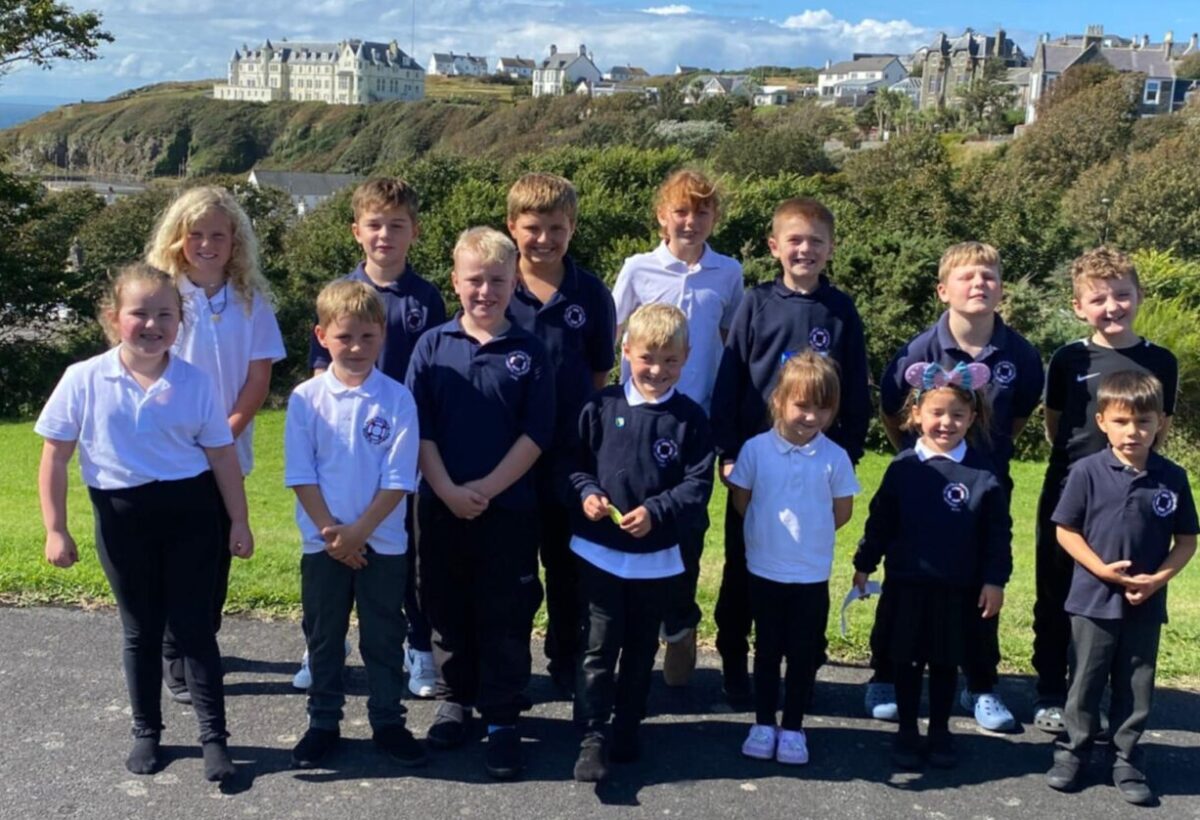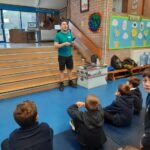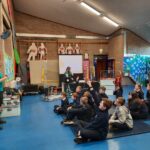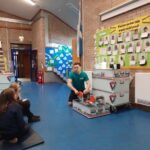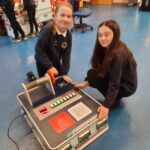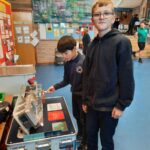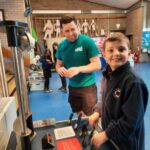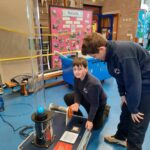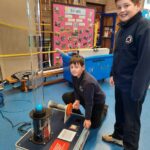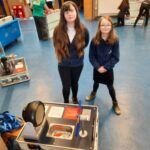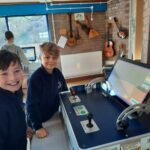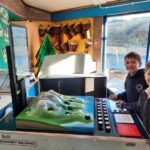The boys and girls from P4-7 were delighted to have welcome two representatives from Glasgow Science Centre today on their roadshow Future Fuels. We have been participating in a block of lessons to learn about this topic.
We started the session by sharing our thinking on what a fuel is. We then expanded to share what we know about non-renewable energy sources. Aileen gave a very interesting demonstration on the combustability of fuel (methanol). We talked about the states of matter: solids, liquids and gases. We learned about the ‘suck-squeeze-bang-blow’ process of car engines.
Aileen then led a discussion on our current use of non-renewable energy sources and how this contributes to greenhouse gases which cause global warming. The group recognised why it’s so important that we find renewable energy sources The group had a great knowledge of renewable energy sources that we can use as greener alternatives.
Ross and Aileen supported our volunteers, Max and Lacey, to take on a solar powered car race. Max just pipped Lacey at the finish line. The children learned how solar power can produce clean electricity. Aileen showed us a giant solar mirror array that is in the American desert that is a clever way to produce energy. The designers of the array had to consider wildlife and put alarms around the area to scare creatures away as the air in the array heats to an incredible 400 degrees C.
We also saw solar panel batteries for the home. Lewis said he has one in his newly built house, which is great. We are all making a contribution to our planet.
Conor charged up a hydrogen laucher by charging up a battery using his kinetic energy via a crank handle. We could see the water bubbles forming. Once charged, it had enough energy to launch a ball high in the air without any harmful waste produced. The world’s first hydrogen power plant is to be built in Britain in the Humber region.
Next up, we explored nuclear fission using a simulating model of ping pong balls loaded on mousetraps. Atticus dropped a ball into the container to start a chain reaction. However, fission produces radioactive waste which is very bad for the environment. The planet’s scientists are working on developing nuclear fusion as an alternative. This energy source is exciting because in the last six month scientists managed to perform an experiment that gave out more energy than it took to make it. Unlike nuclear fission, fusion doesn’t produce radioactive waste, only water.This could be the answer to the planet’s energy crisis.
There was plenty of opportunities for hands-on, practical activities and had fun exploring and investigating different renewable energy sources of solar, wave and wind on the interactive exhibits:
- The windmill Kit
Directional Drilling
Solar Array
Crank Power
50 Hz
3 Phase Generator
Hand Crank Generator
Hydrogen Launcher
We are very grateful to Ross and Aileen for travelling all the way down from Glasgow to support our learning. This was possible as part of their rural school STEM support initiative. What a fab morning we had!
UNCRC Rights of the Child: Article 29-Aims of Education & Article 17 – Health, Water, Food & Environment
Global Goal 13 – Climate Action
